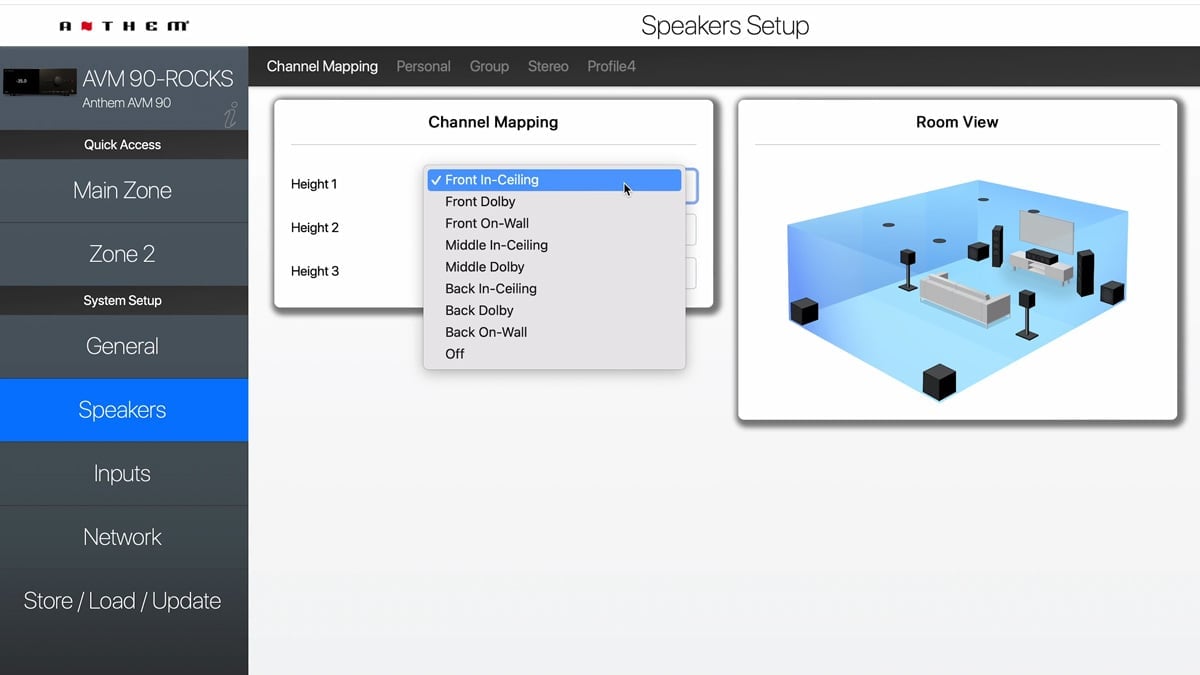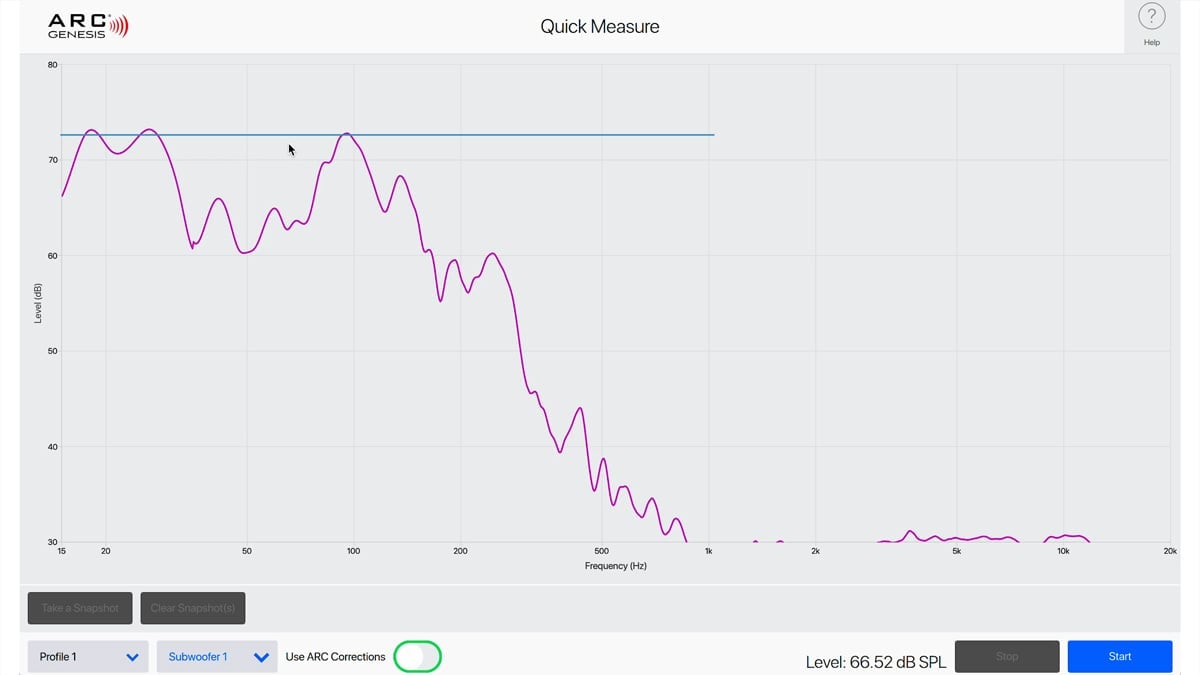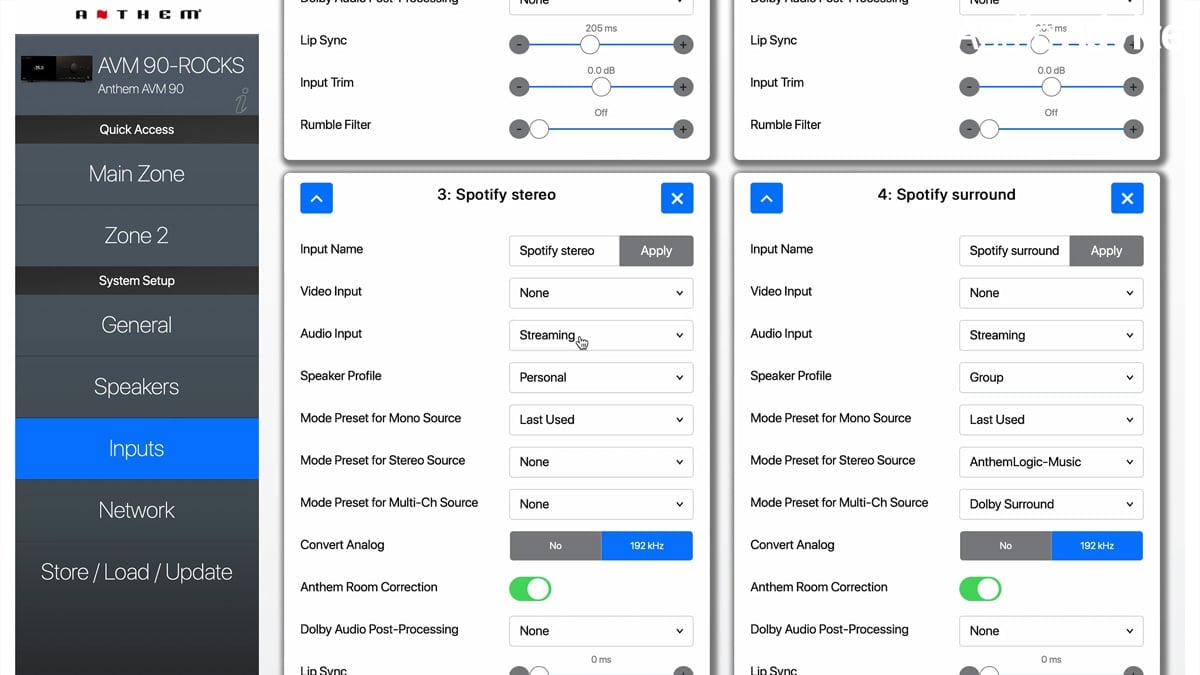Anthem ARC Genesis Setup Guide
Tips & Tricks for Anthem Surround Sound Processors & Receivers




 Home Theater
Show links
Home Theater
Show links
 Speakers
Show links
Speakers
Show links
 Components
Show links
Components
Show links
 TVs & Projectors
Show links
TVs & Projectors
Show links
 Seating & Furniture
Show links
Seating & Furniture
Show links
 Acoustic Treatments
Show links
Acoustic Treatments
Show links
 Cables & Accessories
Show links
Cables & Accessories
Show links
 Featured & Deals
Show links
Featured & Deals
Show links
 Home Audio
Show links
Home Audio
Show links
 Speakers
Show links
Speakers
Show links
 Components
Show links
Components
Show links
 Cables & Accessories
Show links
Cables & Accessories
Show links
 Outdoor Entertainment
Show links
Outdoor Entertainment
Show links
 Acoustic Treatments
Show links
Acoustic Treatments
Show links
 Featured & Deals
Show links
Featured & Deals
Show links
 Turntables
Show links
Turntables
Show links
 Turntables
Show links
Turntables
Show links
 Phono Cartridges
Show links
Phono Cartridges
Show links
 Phono Preamps
Show links
Phono Preamps
Show links
 Record Cleaning & Care
Show links
Record Cleaning & Care
Show links
 Isolation Systems
Isolation Systems
 Cables & Accessories
Show links
Cables & Accessories
Show links
 Featured & Deals
Show links
Featured & Deals
Show links
 Headphones
Show links
Headphones
Show links
 Headphones
Show links
Headphones
Show links
 Headphone Amps & DACs
Show links
Headphone Amps & DACs
Show links
 Featured & Deals
Show links
Featured & Deals
Show links
 Smart Home
Show links
Smart Home
Show links
 Deals
Show links
Deals
Show links

You are either the lucky new owner of an Anthem receiver or processor or perhaps you are considering one and wondering how the setup will go. For those of you who are new owners, congratulations! At Audio Advice, we love the sound of Anthem products.
As with most things that can offer far more performance than the competition, if you want to extract every ounce of great sound, you’ll want to go through a few steps. Will it sound great right out of the box? Sure, but with some care in the setup and calibration, you’ll get even better sound every time you listen to your new Anthem!
Please note that this guide applies to the Anthem MRX 540, MRX 740, MRX 1140, AVM 70, and AVM 90.
Start by taking everything out of the box. Go ahead and put your processor or your receiver in the rack or where it will end up in your system and plug everything in, including the supplied antennas. Add the batteries to the remote and you’ll be ready to get started.
The very first thing you need to do is connect to the internet. There are two ways to get connected.
Once you've connected to the internet, you're going to go to the front of the Anthem, and using your remote, click on the setup menu, scroll down to the network, and find your IP address. You're then going to use that to go to the Web interface.

Next, on your computer, enter the IP address in your browser and it will bring you to the web interface. You will then go into the store/load/update tab and click update. This will update the web interface. Then, be sure to go back to the front of the unit and click update using your remote control.


Now, we're going to go into the General Settings. Give your device a name and change your language, distance units to feet or meters, decibels or percent, or just leave it as default. We suggest setting your maximum volume to zero so if you're making a change and something goes wrong, or you accidentally turn your volume all the way up to max, it will stop it at a certain volume level.
Next, set the Power-On-Input, typically set to Last Used, and toggle on the Default Streaming Zones. Most people keep the default settings for the following:


Most people will leave these settings as is, but you can adjust your front panel brightness if you’d like. There is a Wake-Up-Brightness setting that's usually set a bit brighter or you can also adjust it depending on if you have a 16:9 screen or 2:4:1 screen.


If you like to see the volume overlay or other info on your video while watching, you can leave the On-Screen-Info-Zone to Main Zone or Both Zones. If you do not like to see any info, set it to Off.
If you have an automation system like Control4 for a Creston, most people are going to leave all of these CEC Settings off.
Next, go to the speakers tab on the left of the interface. The primary optimization you're going to make in the beginning is Channel Mapping. If you have a receiver, this is actually where you're going to set your amps as well. Under Channel Mapping on the processors, you'll see you can set your height to either Front Dolby or Front and Ceiling, etc. Set your Heights according to your system on this page.
If you have a receiver, this is where you can just set your amps to go to each of your respective channels. It's pretty straightforward, but if you have questions, feel free to give us a call.

Now, you're going to download Arc Genesis from Anthem. Once you're there, the first thing you’re going to do is a “Quick Measure.” We're trying to accomplish setting your subwoofer amplification to the right level so it's around 75 dB for the bass to match up with the rest of your speakers.
Now, set up the tripod that came with your Anthem and slide the mic into position. Attach the USB to the mic and the other end to your computer. Be sure the mic is facing directly up at a 90-degree angle with the black dot facing forward. It is extremely important to have the mic set up in the correct position so that the software can make the correct measurements.

Find your first listening position by using your main seat or in between your two main seats. Be sure to place the mic at about ear height. Your first listening position is by far the most important, so you want to make sure it is spot on. Once the mic is in place, we're going to run the quick measure on all of your subs only. If you have one subwoofer, you want to set your quick measure to 75 dB. If you run two subs, drop it by 3 dB so both subs will be at 72 dB and so on depending on how many subs you have.

One of the mistakes people often make is looking at the dB level displayed and assuming it’s the correct number. When running the ARC calibration, it actually looks more at the peaks. You will want to look at the chart and find these peaks, which are typically a little higher than the displayed level. In our case, our displayed level was 68 but our peaks were around 72. So what we did for each sub was turn it down or up to meet the correct dB we wanted. Again, depending on how many subs you have, we followed the rule of dropping it by 3 dB. Since we had 4 subs, we wanted our peaks to be around 66 dB. After setting your subs to the correct dB level, click the ARC Genesis logo on the top left to go back home and select your device on the top left.

Now it is time to configure measurements. Set your height locations on the first screen if needed. On the right side of the screen, it will say “Measurement A.” For most people, you’ll only need one measurement profile for your main listening profile. However, ARC will let you add multiple measurements if you want to get more advanced. A common reason to do this is if you want to have a “Group” setting where you have doors and/or drapes open, and lots of people in different areas of the room casually watching the screen. This will optimize the sound to be best for the entire room. A more common profile that we recommend always having is your “Personal” profile. This sets up the main listening position to be best optimized for the sound and focuses on allowing that main seat or seats to be the highest performance possible.
Next, we recommend setting the “Number of positions to measure” to 5 for your “Personal” profile to make it tight around your main listening position. Then, make sure all the speakers and subs you have are checked off below. For the “Group” measurement we recommend using 9 positions. If you have 2 rows, you may want to use 10 positions and run 5 on each row for the best results. Click continue and select your mic.
Before you continue, you will need to make sure your mic is set up in the right first position and is ready to be moved to the next position as you run the software.
We want this microphone to be a line of sight to all the speakers and everything in the room when set up how you would have it when watching. Recline the seats to the spot you normally have them, close doors and drapes that you typically would close, and make sure all HVAC and other systems are off. You will need the room to be extremely quiet for about 15 minutes or so while you run the software.
We'll run the first position there and then it's going to ask for positions, let's say two, three, four, and five. Number two, it's going to move slightly forward and you'll see ARC Genesis will tell you this again, make sure your black dot is placed forward and best practice is to move height a little bit. Generally, what you'll do is drop about six inches on positions number two and number three, and then when we go behind, we're going to move it up a little bit.
You're going to move about two to three feet between each position, as you’re trying to calibrate across what your ears are going to hear for the room. Just use your own logic. In some cases, you're going to adjust it a little bit, maybe for a shorter or taller person, when you're going behind it. Don't get too caught up in whether you went two and a half feet or three feet, in general, as you're trying to measure the sort of key area. Then, replicate position number three over on this side and I would get relatively symmetrical there. Then position number four and five, I'm going to have the microphone slightly behind the black dot placed forward. In this case, I will bring it up about six inches from the original.
So again, I'm trying to get this sort of sphere where your ears might be reclined a little bit back, pull a little bit forward, a little bit up, a little bit down again, whether it's six inches or five doesn't matter so much.
If you have two rows of seats, we recommend making an X pattern. To see what this looks like in better detail, review our video on YouTube. If you have three rows, usually your middle row is going to be your primary listening and you're going to spread out across those three rows.
If your primary listening row is against the back wall, instead of doing the X pattern, you’ll make more of a W pattern with the mic against the back wall instead of slightly behind the seats like normal. Once it does all the calculations you’re going to click review and take a look at all your calculations to see how they came out.
After running the measurements you’ll see that you can have multiple profiles. Our first profile is the personal one for when you want high performance and it’s just you and one other person. The next profile is Group. This is for when there are more people and you want a better spread of sound. You can also create a third profile named “Stereo” for when you want to listen to two-channel music. You can have up to four profiles total.


Under adjusting targets on the personal profile, you'll see we’ve got room gain of about three. If you feel like you don't have enough bass in the room once you’ve put this in, for most people, what you're going to do is bring up room gain. We tend to find between three and four is where it works well for most people.
You'll see as you increase it, it's going to increase this target curve. You're bringing up the bass because a flat bass doesn't sound great to most people and they actually prefer it to be a little bit more than it was originally intended. You can raise the deep bass boost if you want that sort of more super deep feeling by bringing it somewhere around one dB. You'll see as you do that it brings up the lowest part of the target curve.
Now click Continue. Going on to the second profile you’ll see this one has a lot more data points and crosses more chairs than the first one. However, let's say you want to bring up the bass after listening to it again, you'll do the same thing here.
You can give these things a try and if you don't like them, reverse them. Then we’re going to continue on to the final profile, which is the stereo profile. Again, you'll see the exact same thing in the stereo profile. You'll see it's already got the room gained pretty high in this setup and no deep bass boost.
Next, click continue and let the program run all the calculations. Then click upload to device and save your configuration. You can give it a name by going to file > save. Click on the bottom button and run all the phase calculations as well. These will automatically upload to your device.
We will then exit Arc Genesis and move over to the web interface. From here you will look over your profiles to be sure they are correct.
Now let's go set up the inputs. Watch our video to see how we set each of the inputs up, or use your best judgment to set up which ones you want for your system. In each input, remember to select the profile that you want it to use. You can see how we set all this up in our video.

We hope this quick guide will help you achieve great results quickly. If you now have the bug for even more improvements, you might want to check out our free 3D home theater design tool where you can plan out your ultimate home theater. At Audio Advice, we've been designing and installing high-performance home theaters & smart home systems for our customers in North Carolina and the surrounding areas for decades. In fact, we've delivered more custom theaters than anyone in the Southeast! We are now offering Home Theater Design no matter where you live in the United States!
If you are interested in a custom home theater or upgrading your current system, give us a call at 888.899.8776, chat with us, or stop by our award-winning showrooms. We can't wait to help you build your ultimate home theater!
You'll be among the first to know about product launches, exclusive online deals, and the hottest audio trends.
8621 Glenwood Ave
Raleigh, NC 27617
919.881.2005
11409 Carolina Place Pkwy
Pineville, NC 28134
704.821.4510
5732 Oleander Drive
Wilmington, NC 28403
910.392.1200
support@audioadvice.com
888.899.8776
